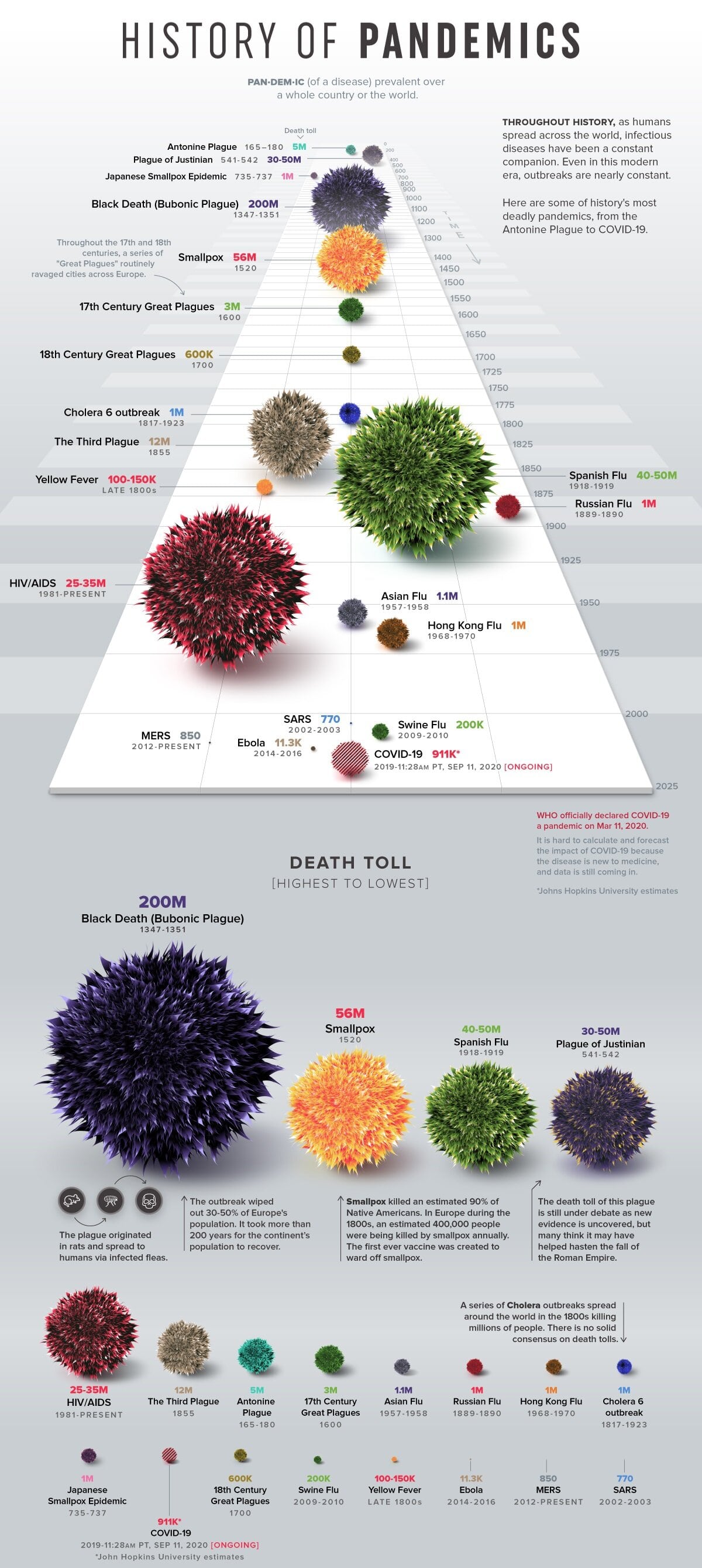Science & Technology
Future Pandemics and Reduction Measures
- 05 Nov 2020
- 4 min read
Why in News
Recently, the Intergovernmental Science-Policy Platform on Biodiversity and Ecosystem (IPBES) has released a report which warns about future pandemics, their more frequent emergence, a faster pace of spread and more damage to the world killing more people than Covid-19, unless significant measures are taken.
- The IPBES is an independent intergovernmental body, established by the United Nations (UN) in 2012.
- It aims to strengthen the science-policy interface for biodiversity and ecosystem services for the conservation and sustainable use of biodiversity, long-term human well-being and sustainable development.
Key Points
- Pandemics of the Century:

- Covid-19 is at least the sixth pandemic to have taken place in the last century since the Spanish Influenza Pandemic of 1918.
- In March 2020, the World Health Organisation (WHO) declared Covid-19 a pandemic.
- Three of the pandemics were caused by influenza viruses, one by Human Immunodeficiency Virus (HIV) followed by Severe Acute Respiratory Syndrome (SARS) and now Covid-19.
- Covid-19 is at least the sixth pandemic to have taken place in the last century since the Spanish Influenza Pandemic of 1918.
- Causes:
- Almost all the pandemics so far, have been zoonoses (diseases caused by germs that spread between animals and people).
- More than 70% of emerging diseases, such as Ebola, Zika and Nipah, are caused by microbes found in animals which spread due to contact among wildlife, livestock and people.
- The estimated value of the legal international wildlife trade in 2019 was about USD 107 billion, a 500% increase since 2005 and a 2000% increase since the 1980s.
- Covid-19’s origins also lie in microbes carried by animals but its emergence has been entirely driven by human activities like all pandemics.
- About 30% of emerging infectious diseases are attributed to land-use change, agricultural expansion and urbanisation.
- Future Possibilities:
- Currently, there are over 1.7 million ‘undiscovered’ viruses that exist in mammals and birds, out of which up to 827,000 could have the ability to infect humans.
- Reduction Measures:
- Pandemic risk can be lowered by reducing the human activities that drive the loss of biodiversity, by greater conservation of protected areas and through measures that reduce unsustainable exploitation of high biodiversity regions.
- These measures will help in reducing the contact between wildlife-livestock and humans, thereby helping prevent the spread of new diseases.
- Policy options like launching a high-level intergovernmental council on pandemic prevention, countries setting mutually-agreed goals or targets regarding the environment, animals and people, and reducing zoonotic disease risk in the international wildlife trade by forming intergovernmental ‘health and trade’ partnerships will also reduce the risks substantially.
Pandemic
- According to the WHO, a pandemic is declared when a new disease for which people do not have immunity spreads around the world beyond expectations.
Epidemic
- An epidemic is a large outbreak, one that spreads among a population or region. It is less severe than pandemic due to a limited area of spread.






